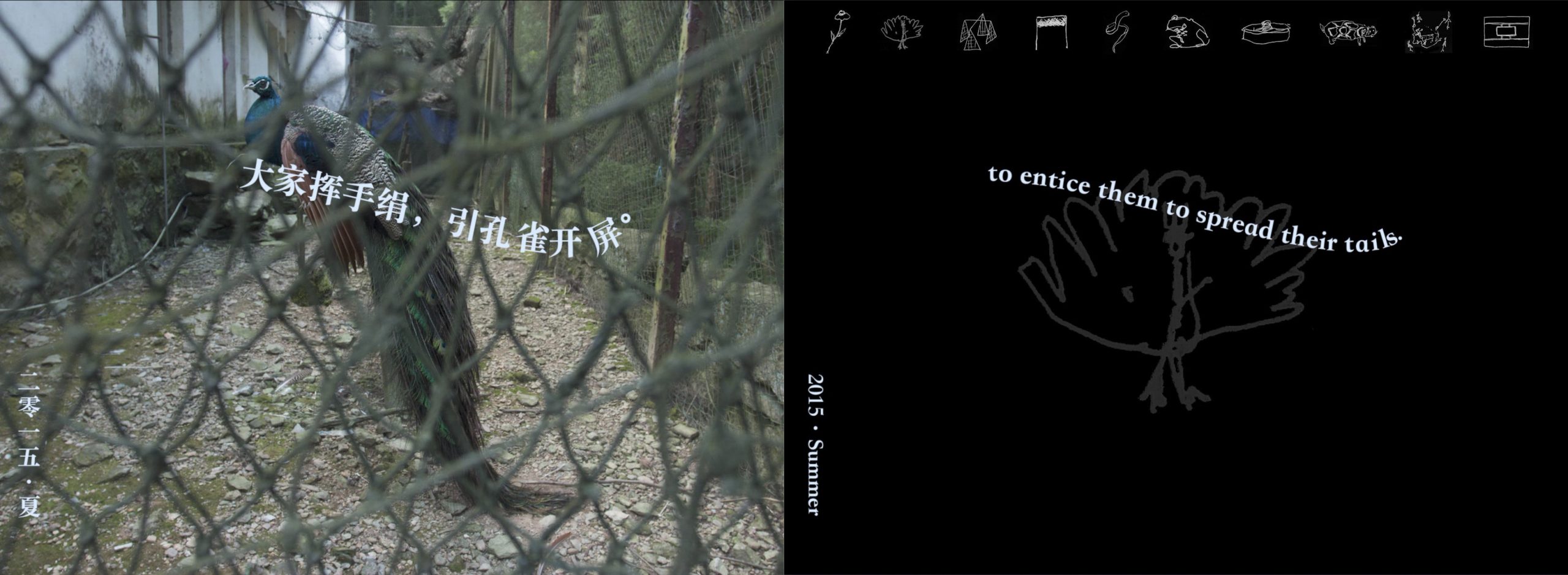Yi Xin TONG
Poems in the Mount Lu Zoo
Tickseed 3’16”
Flaunting Peacock 2’17”
Hundred Birds Paying Homage to the Phoenix 2’06”
The Becoming of Feathered Beings 2’58”
Startled Python Disappears into the Grass 1’32”
Giant Spiny Frog 0’52”
King of Monkey Hill 1’50”
Clouded Leopard in the Clouds 2’56”
Who Killed the Deer 1’48”
Protective Infanticide 6’05”
Poems in the Mount Lu Zoo draws on the history of decline and transformation of a zoo in Yi Xin Tong’s hometown Mount Lu. The zoo was built in 1953, but in the 1990s, fell into disrepair and was ultimately abandoned. Later, pavilions originally designed to fit the characteristics of different animals were gradually occupied by workers from elsewhere, transformed into residential dwellings. Since 2015, Tong has visited the zoo every year and recorded its changing conditions, observing how the architecture have been devoured by nature or altered by humans according to their needs. The ten videos concern individual species and pavilions.
Yi Xin Tong’s interest in non-human beings and site-specificity renews in his latest work Poems in the Mount Lu Zoo.The series of ten poetry videos revolves around the history of decline and transformation of a zoo in his hometown Mount Lu. The zoo was built in 1953, but in the 1990s, fell into disrepair and was ultimately abandoned. Later, pavilions originally designed to fit the characteristics of different animals were gradually occupied by workers from elsewhere, transformed into residential dwellings. Since 2015, Tong has visited the zoo every year and recorded its changing conditions, observing how the architecture have been devoured by nature or altered by humans according to their needs. The ten videos concern individual species and pavilions. The narratives render an allegorical texture, while the moving images can also be regarded as footnotes to the poems. The artist embeds the videos in an arc-shaped wall he designed for the exhibition at UCCA, inspired by the architectural elements of the zoo as well as the “windows” carved out by its later occupants. The provocative relationship between animals, humans, and architecture in this spatiotemporal context has its ups and downs as if in a three-act drama. – Curator Neil Zhang


